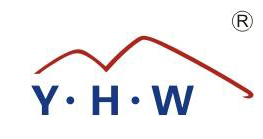The design and profile of roof metal flat tiles play a significant role in both the aesthetics and functionality of a roof. These factors influence the visual appeal, performance, and durability of the roofing system.
From an aesthetic standpoint, the design and profile of metal flat tiles can create a sleek, modern, or traditional look, depending on the desired style. Flat tiles have a clean, uniform appearance that often complements contemporary architectural styles, offering a minimalist and smooth finish. The profile, which refers to the thickness and edge shape of the tiles, can affect the roof’s visual texture, contributing to a more polished, streamlined look. In contrast to more traditional, heavily textured roofing materials, flat metal tiles offer a refined and uniform surface that can enhance the overall aesthetic of the building. The color and finish options available for metal tiles, such as matte, glossy, or textured coatings, further influence the look of the roof and can be selected to match the building's design theme.
Functionally, the profile of metal flat tiles affects the roof’s ability to shed water and resist the elements. Flat tiles, when properly installed, create a smooth surface that allows rainwater to flow more efficiently, reducing the risk of pooling or water infiltration. While the low profile can give the roof a sleek look, it also means the tiles are designed to interlock tightly, providing enhanced weather resistance and preventing the tiles from lifting under high winds. Additionally, the flat design is often lightweight, which can reduce the overall load on the building’s structure and make installation easier compared to heavier, more traditional roofing options.

The tile profile also impacts insulation and energy efficiency. Depending on the design, metal flat tiles can offer better thermal performance. Some profiles may include additional features, such as reflective coatings or layered designs, to improve the roof's insulation, reducing heat absorption and improving energy efficiency by reflecting sunlight away from the building. This can help maintain a comfortable indoor temperature and reduce cooling costs, especially in hot climates.
In terms of functionality, the design of metal flat tiles contributes to their durability and longevity. For example, many metal flat tiles have grooves or channels built into their profile, which allows for better water drainage and reduces the risk of water damage or leaks. Additionally, metal flat tiles are often coated with protective finishes to resist corrosion, ensuring long-term performance and minimal maintenance.
The design and profile of roof metal flat tiles significantly influence both the aesthetic appeal and practical performance of the roof. The choice of profile impacts the roof's appearance, water resistance, durability, and thermal efficiency, making it an important consideration in both residential and commercial roofing projects.




 English
English русский
русский Español
Español عربى
عربى















